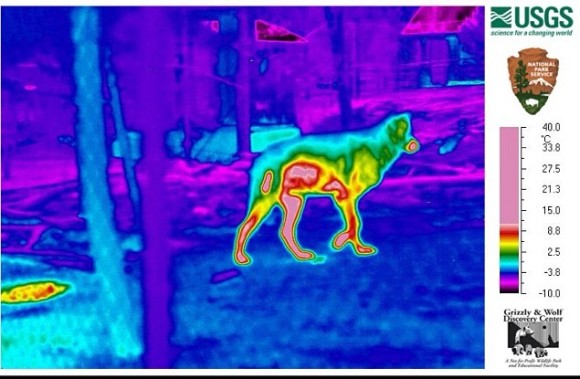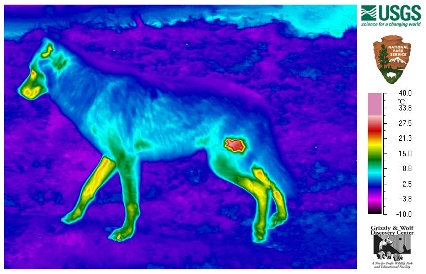Thermal imagery for understanding mange in Yellowstone Park wolves

USGS scientists are using technology for an interesting form of Earth stewardship, when they employ thermal imagery to assess impacts of sarcoptic mange on wild wolves in Yellowstone National Park. Sarcoptic mange, a highly contagious canine skin disease, affects the wolves’ survival, reproduction and social behavior. It’s caused by mites that burrow into the skin causing infections, hair loss, severe irritation and an insatiable desire to scratch. The resulting hair loss and depressed vigor of an infected animal leaves them vulnerable to hypothermia, malnutrition and dehydration, which can eventually lead to death.
To help understand the role of mange in the lives of gray wolves, researchers need to understand the costs and extent of infection. Thermal imagery of wolves allows scientists to not only document the extent of hair loss caused by mange, but the actual loss of heat associated with the different stages of infection

Note the bright red patch on the wolf’s hindquarters in this thermal image of a captive wolf at the Grizzly and Wolf Discovery Center in West Yellowstone. This is where fur was shaved to replicate the loss of fur associated with sarcoptic mange. The fur will eventually grow back. All research animals are handled by following the specific requirements of USGS Animal Care and Use policies.
Read more about the use of thermal imagery to understand mange on wolves, from USGS











